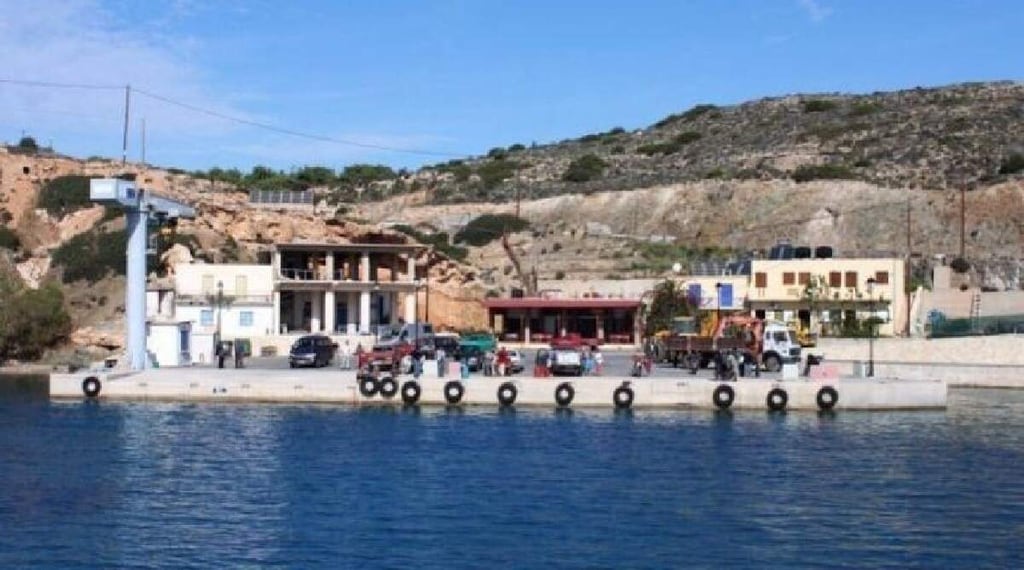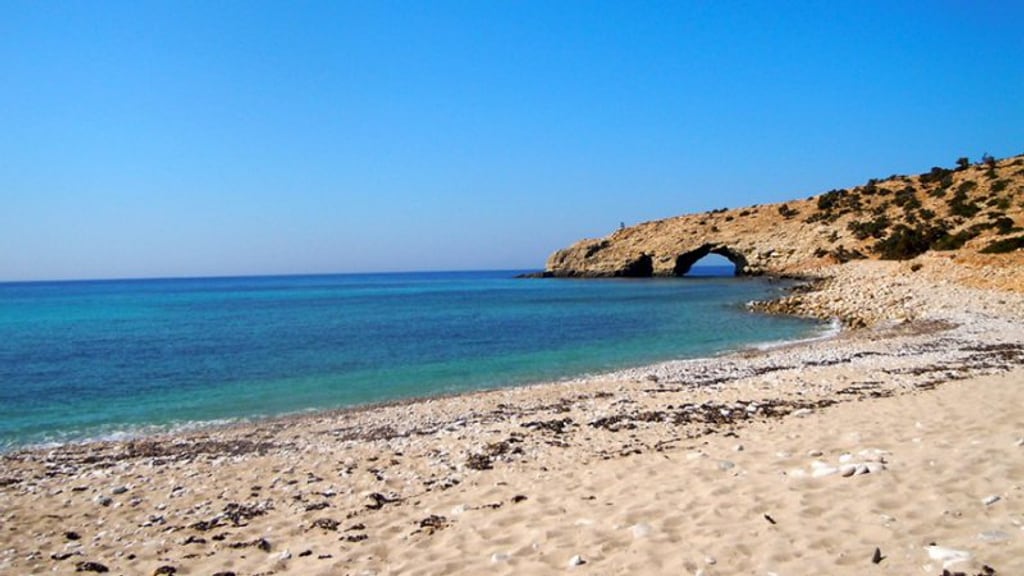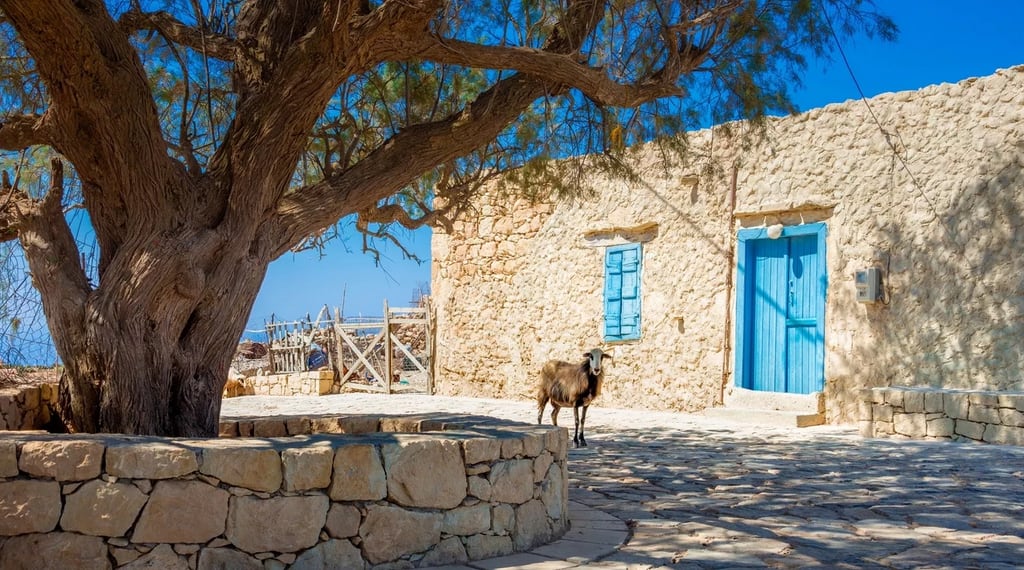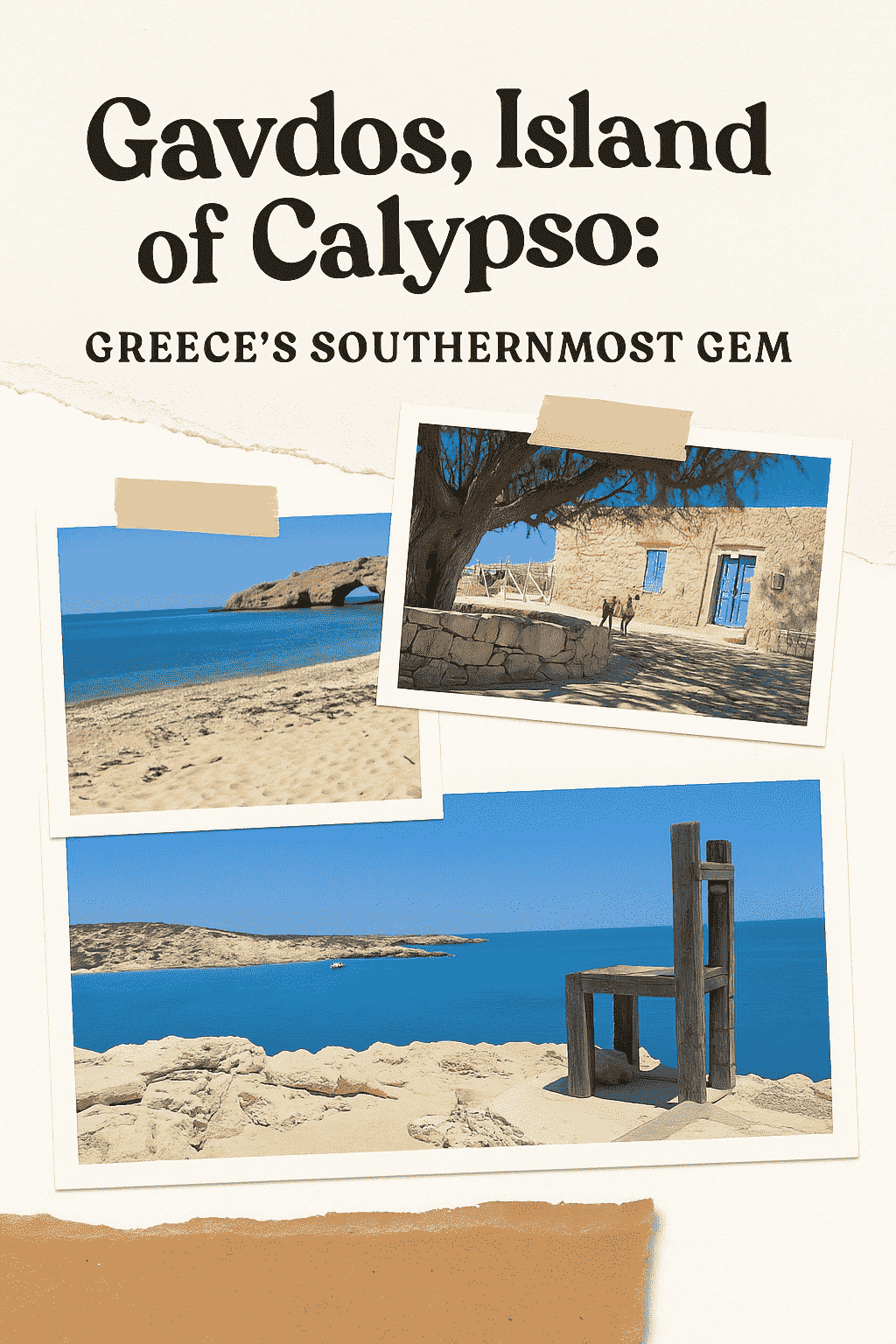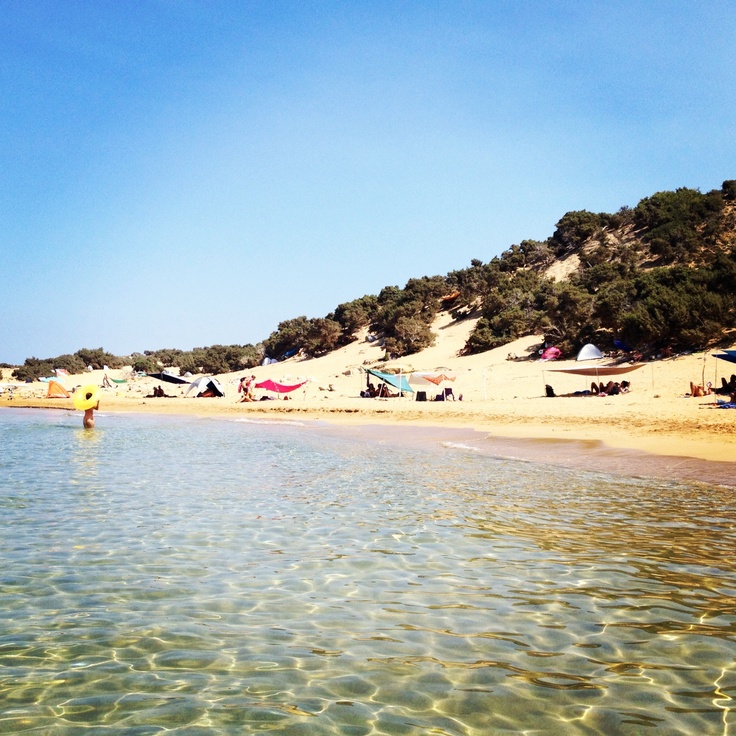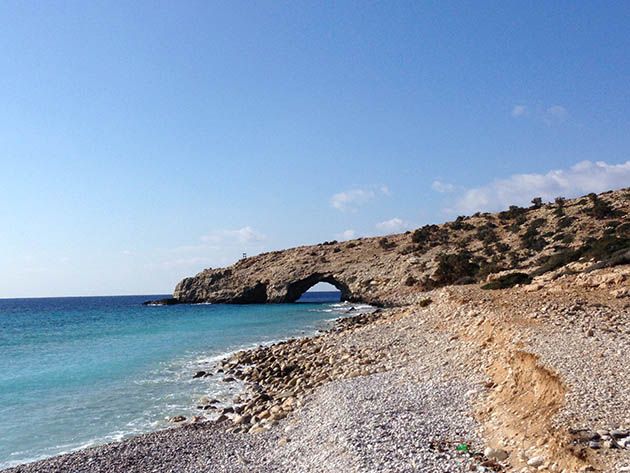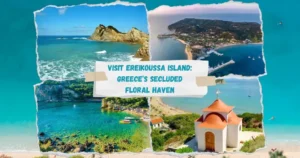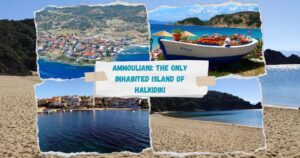Gavdos, Island of Calypso: Greece’s Southernmost Gem
Far away from the crowds of Santorini and the bustle of Athens lies a hidden island where time seems to pause. Gavdos, the southernmost point of Europe, is a place few tourists venture to, but those who do rarely forget it. Here, the Libyan Sea sparkles in silence, pine-scented hills roll gently into golden beaches, and ancient legends seem to echo in the wind. If you’re looking to leave the beaten path and discover the raw, unfiltered beauty of Greece, Gavdos may just be your next adventure.
A Mythical Island Lost in Time
Gavdos has long been wrapped in mythology. It’s believed to be the island of Ogygia, where Calypso kept Odysseus captive in Homer’s Odyssey. Whether myth or truth, the island certainly carries an air of mystery. There are no resorts, no cruise ships, and no crowds. Just a peaceful landscape of wild nature, kind locals, and an energy that feels otherworldly. You won’t find luxury hotels here—but you will find soul.
How to Get to Gavdos
Getting to Gavdos requires a little effort, but that’s part of what makes it so special. The journey starts from Crete, typically from the town of Chora Sfakion or Paleochora. From there, ferries run several times a week during the summer months. The ride across the Libyan Sea takes about 1.5 to 2 hours, depending on the weather. The ferry can be a small adventure in itself, especially when the sea gets choppy. It’s not for the faint of heart, but it’s worth every wave.
Life Without Clocks or Crowds
Time doesn’t mean much on Gavdos. There are no traffic lights, and few cars. Most visitors either camp on the beaches or stay in family-run guesthouses scattered across the island. Internet is patchy at best, and mobile coverage is inconsistent. But that’s exactly the point. Gavdos invites you to slow down, breathe deeper, and reconnect with the present moment. A book, a hammock, and the sound of the sea may be all you need.
Stunning Beaches for the Soul
The beaches of Gavdos are among the most untouched in all of Greece. Each has its own personality, and none are spoiled by sunbeds or clubs. Agios Ioannis, a remote stretch of soft sand and pine forest, has been named one of the most beautiful beaches in the world by those lucky enough to find it. Nearby, Tripiti is the island’s southernmost point and boasts the iconic three-arched rock formation. You can sit in Europe’s “southernmost chair,” a giant sculpture looking out over the endless blue. Sarakiniko Beach is more accessible, with a couple of tavernas nearby and calm, shallow waters perfect for swimming. If you’re up for a hike, Lavrakas and Potamos beaches offer seclusion and raw natural beauty. Nudism is common on many of these beaches, and no one seems to mind. Gavdos is a place of freedom, after all.
Exploring on Foot
Much of Gavdos is best explored by walking. The island has a network of marked hiking trails that connect villages and beaches, leading you through juniper groves, abandoned shepherd huts, and clifftop viewpoints. One popular route is from Kastri, the island’s capital, to Agios Ioannis beach. It’s about a 2-hour walk, but you’ll be rewarded with silence, scenery, and maybe a herd of goats crossing your path. Another beautiful trek is the trail from Vatsiana to Tripiti Point. Along the way, you’ll pass old olive trees, remote chapels, and fragrant herbs growing wild. Sturdy shoes, a hat, and plenty of water are essential—shade is scarce, and the Cretan sun is unforgiving.
The Villages of Gavdos
Gavdos has a handful of tiny villages, each with its own character. Kastri is the administrative center, with a few tavernas and a mini-market. Vatsiana is known for its small café and local honey. Ambelos and Xenaki are mostly residential, with traditional stone houses and sea views. These villages offer a glimpse into a simpler way of life. Don’t expect much nightlife—maybe a shared bottle of raki and some live music in a local courtyard, if you’re lucky.
Simple Food with Big Flavor
Food on Gavdos is local, homemade, and always delicious. Most tavernas serve what they grow, catch, or raise themselves. The menus are simple: fresh fish, lentil stews, dakos (barley rusks with tomato and cheese), wild greens, and goat cooked with herbs. Don’t miss the local cheese and honey. A meal with wine usually costs around €10–15, and portions are generous. Water is a precious resource on the island, so bottled water is common, and it’s a good idea to carry your own refillable bottle. For breakfast, strong Greek coffee and sweet pastries set the tone for a lazy day.
Camping Under the Stars
Wild camping is tolerated on Gavdos, especially at Agios Ioannis and Lavrakas beaches. Many travelers come with hammocks or small tents and spend weeks living with the rhythm of the waves. Just remember: there are no facilities, so bring what you need and leave no trace. Respect the environment—Gavdos is fragile and beloved by those who cherish its purity.
What to Pack
Gavdos is rugged, remote, and undeveloped, so pack accordingly. Essentials include a flashlight, a power bank, and any medication you might need. Cash is important, as ATMs are rare or nonexistent. Comfortable shoes for hiking, a wide-brim hat, and light clothing are key. Nights can be cool, especially in spring and autumn, so bring a light jacket. If you plan to camp, bring your own gear and eco-friendly supplies.
When to Go
The best time to visit Gavdos is from late May to early October. July and August can be hot and busy (by Gavdos standards), while June and September are quieter and cooler. Spring brings wildflowers and migrating birds, while autumn offers warm seas and golden sunsets. Winter is not ideal—ferries are rare, many places close, and the weather can be unpredictable. Still, a few hardy souls choose to spend the off-season in near solitude.
Gavdos Is Not for Everyone
Gavdos is for those who are ready to disconnect from modern life. There are no luxury resorts, shopping streets, or big events. Electricity may be solar-powered and limited. The roads are rough, and services basic. But for travelers seeking authenticity, peace, and a connection with nature, it’s pure gold. Come with an open mind and you’ll leave with a full heart.
Responsible Travel on Gavdos
Being remote and ecologically sensitive, Gavdos depends on respectful visitors. Always take your trash with you, minimize water use, and support local businesses. Avoid using plastic where possible, and be mindful of where you walk and camp. Wildlife, plants, and the people here deserve your care. The very thing that makes Gavdos special is how untouched it feels—let’s keep it that way.
Final Thoughts
Gavdos isn’t just another island—it’s an experience. A deep breath in a noisy world. A place where the stars shine brighter, where conversations matter more, and where your days are measured not by clocks but by the movement of the sun. Whether you stay for a few days or a few weeks, Gavdos will leave its mark on you. It reminds us that the most beautiful destinations are often the ones furthest from everything we know.



